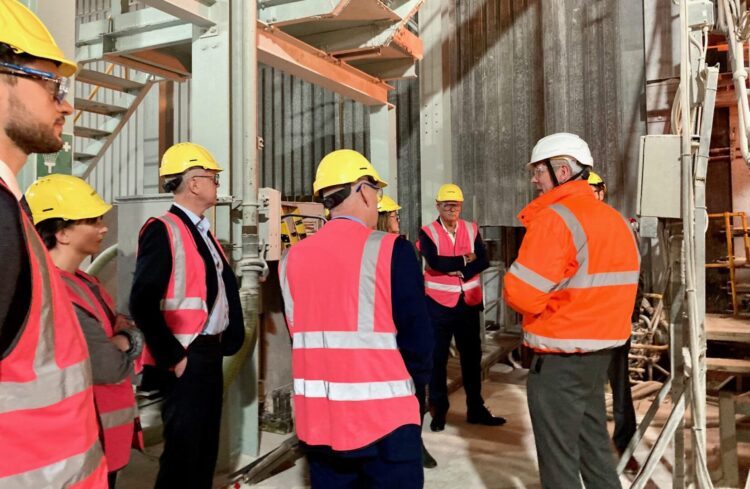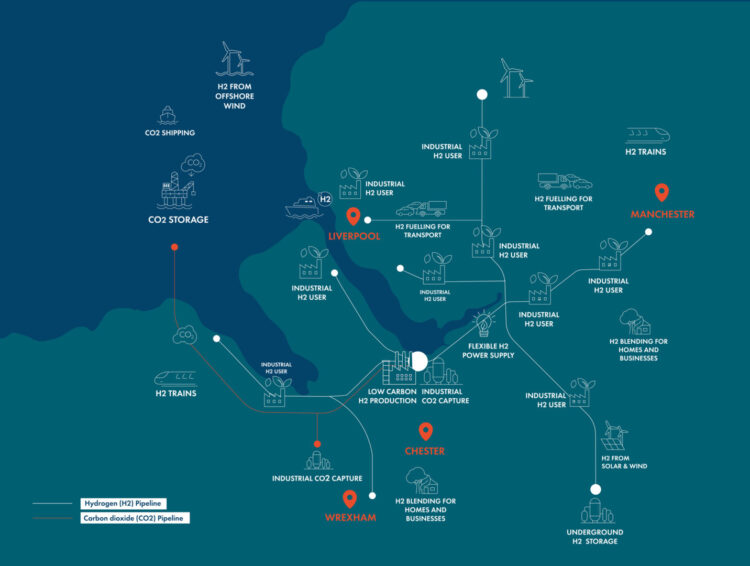A second trial at the Pilkington glassmaking factory in Liverpool city region demonstrates its furnaces can run off hydrogen, providing a possible route to cutting carbon emissions. Tony McDonough reports

Glassmaker Pilkington has hailed a five-day trial of running one of its furnaces using a mix of hydrogen and natural gas a success.
In August, St Helens-based Pilkington achieved a global first by firing 100% hydrogen in part of the furnace. The latest pilot demonstrated that the full furnace could be run on the hydrogen blend, without compromising on quality standards or operational performance.
Each day during the trial, two tonnes of hydrogen were consumed – which could have provided an equivalent hydrogen blend to approximately 30,000 average-sized homes.
The trial at Pilkington, which has been making glass in St Helens since 1826, is part of the multi-billion pound HyNet project, covering the North West and North Wales. Earlier tis week the Government backed HyNet, giving it the go-ahead to become operational by 2025.
However, an LBN special report this week highlighted the huge practical challenges HyNet faces to achieve its goal of reducing annual carbon emissions by an estimated 10m tonnes by 2030.
HyNet is focused on producing ‘blue hydrogen’. This involves burning natural gas. Instead of being released into the air and contributing to the greenhouse effect, the CO2 is captured and stored. However, carbon capture on this scale has yet to be achieved anywhere in the world without significant leakage problems.
There are also question marks over how much blue hydrogen would actually save in terms of carbon emissions. A study from Cornell in the US indicated the savings would be between 9% and 12%.
HyNet does have a longer term aspiration to produce ‘green hydrogen’ via renewable energy sources instead of gas.
Earlier this week INOVYN, a subsidiary of chemical giant INEOS, announced investment plans to upgrade existing production at Runcorn so that it can supply compressed fuel-cell quality hydrogen to mobility and power generation sectors.
This is part of more than €2bn investment in Green Hydrogen announced by INEOS earlier this week. INOVYN, which has been producing and using low-carbon hydrogen at its Runcorn site for more than 100 years, is set to ramp up supply of hydrogen to fuel the UK’s transport network.
Specifically, the investment will deliver dedicated on-site facilities for the purification and compression of existing low carbon, fuel cell quality hydrogen for subsequent loading and transportation and distribution to fuelling stations across the UK.

The trials at Pilkington have been using ‘grey hydrogen’, produced entirely with natural gas and no carbon capture. The initial aim is to see whether the process works. Matt Buckley, UK managing director of Pilkington UK, part of the NSG Group, said: “We are proud to sit at the forefront of hydrogen innovation in the glass industry.
“Our team’s collaborations with HyNet and HyDeploy are enabling huge steps forward to be taken, as we work towards the decarbonisation of our activities. Both trials have successfully demonstrated that it is possible to use hydrogen to safely and effectively fire a float glass plant.”
HyNet’s project director David Parkin added: “For industry to play its part in the UK’s drive to Net Zero, we must tackle our carbon emissions from gas.
“HyNet is working across the North West and North Wales regions to provide our vital industries with low carbon hydrogen, enabling them to flourish through our energy transformation.”

